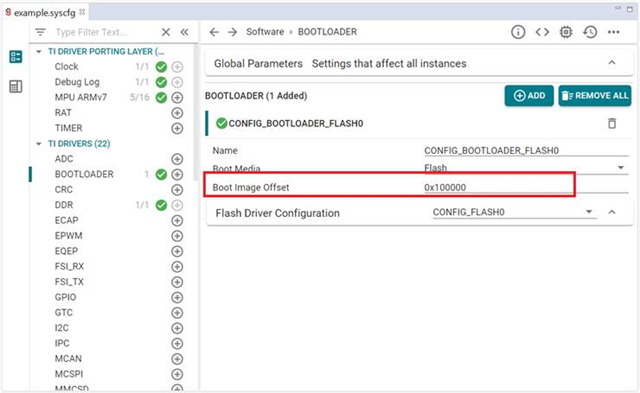Hi Support,
We have the problem that the SBL doesn’t loads the firmware using the new SDK Version mcu_plus_sdk_am243x_08_03_00_05
The Basis of our SBL is the sbl_ospi_am243x example in the sdk.
The only difference in the integration of our owner flash driver and before the integration for this in the SBL, it was tested and verified the correct functionality.
The Integration looks as follows
1. Deleted Flash and Bootloader driver from the sysconfig
The Flash and Bootloader driver are initialized and configured separately according to the sdk (see below the sequence).
We tested this in PREVIOUS SDK VERSION (mcu_plus_sdk_am243x_08_02_00_12) and it works
2. The code sequence and debugging :
- Bootloader_Profiles & SystemInit & DriversOpen & Scilclient ===> (ok)
- OWNER Flash Driver initialized and Bootloader as well as structures & callbacks (as required by the sdk) === > ok
- Call Bootloader_parseMultiCoreAppImage === > (ok)
- Set clocks for self cluster === > (ok)
- Call Bootloader_loadSelfCpu === > (ok)
- Call Bootloader_runSelfCpu === > Jump : Firmware was NOT loaded.
Of course,
1- We are copied to flash a firmware at the corresponding address
2- The evm is in OSPI boot mode
What could be the problem? There are something else that we need to consider in the sysconfig?
Maybe the way to integrate a new Flash driver is not correct, but here in the previous SDK (mcu_plus_sdk_am243x_08_02_00_12) works
What we do wrong?
Thanks a lot!
Best Regards
Karen Agüero


